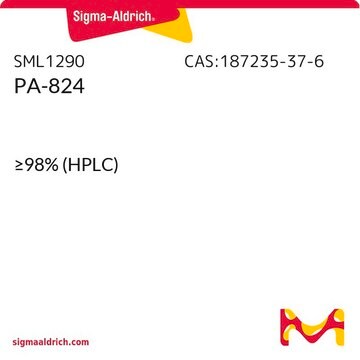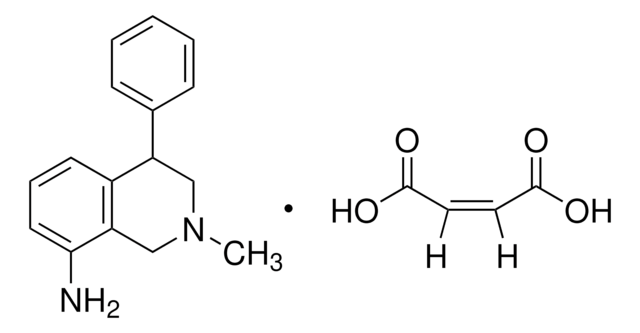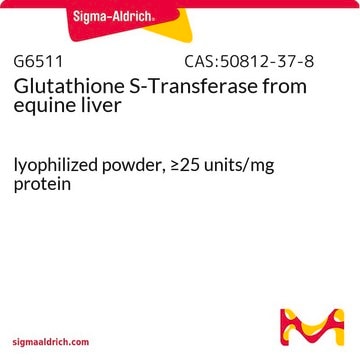SML1309
SQ109
≥98% (HPLC)
Sinonimo/i:
N-[(2E)-3,7-Dimethyl-2,6-octadienyl]-N′-tricyclo[3.3.1.13,7]dec-2-yl-1,2-ethanediamine, N-[(2E)-3,7-dimethyl-2,6-octadienyl]-NŒ-tricyclo[3.3.1.13,7]dec-2-yl-1,2-ethanediamine, NSC 722041
About This Item
Prodotti consigliati
Livello qualitativo
Saggio
≥98% (HPLC)
Forma fisica
oil
Colore
colorless to yellow
Temperatura di conservazione
2-8°C
Stringa SMILE
C/C(CCC=C(C)C)=C\CNCCNC1[C@@H]2C[C@@H]3C[C@H]1C[C@H](C2)C3
InChI
1S/C22H38N2/c1-16(2)5-4-6-17(3)7-8-23-9-10-24-22-20-12-18-11-19(14-20)15-21(22)13-18/h5,7,18-24H,4,6,8-15H2,1-3H3/b17-7+
JFIBVDBTCDTBRH-REZTVBANSA-N
Descrizione generale
Applicazioni
- as an antitubercular agent to study its interactions with mycobacterial membrane proteins large 3 (MmpL3) binding pocket
- as a positive control to determine the minimum inhibitory concentration (MIC) of ohmyungsamycins (OMS) A and B against Mycobacterium tuberculosis (Mtb) using the resazurin microtiter assay (REMA) plate method
- as an inhibitor of MmpL3 to explore the utility of mycobacterial CRISPR interference for validating target gene essentiality and compound mode of action
Azioni biochim/fisiol
Codice della classe di stoccaggio
11 - Combustible Solids
Classe di pericolosità dell'acqua (WGK)
WGK 3
Punto d’infiammabilità (°F)
Not applicable
Punto d’infiammabilità (°C)
Not applicable
Certificati d'analisi (COA)
Cerca il Certificati d'analisi (COA) digitando il numero di lotto/batch corrispondente. I numeri di lotto o di batch sono stampati sull'etichetta dei prodotti dopo la parola ‘Lotto’ o ‘Batch’.
Possiedi già questo prodotto?
I documenti relativi ai prodotti acquistati recentemente sono disponibili nell’Archivio dei documenti.
Il team dei nostri ricercatori vanta grande esperienza in tutte le aree della ricerca quali Life Science, scienza dei materiali, sintesi chimica, cromatografia, discipline analitiche, ecc..
Contatta l'Assistenza Tecnica.








